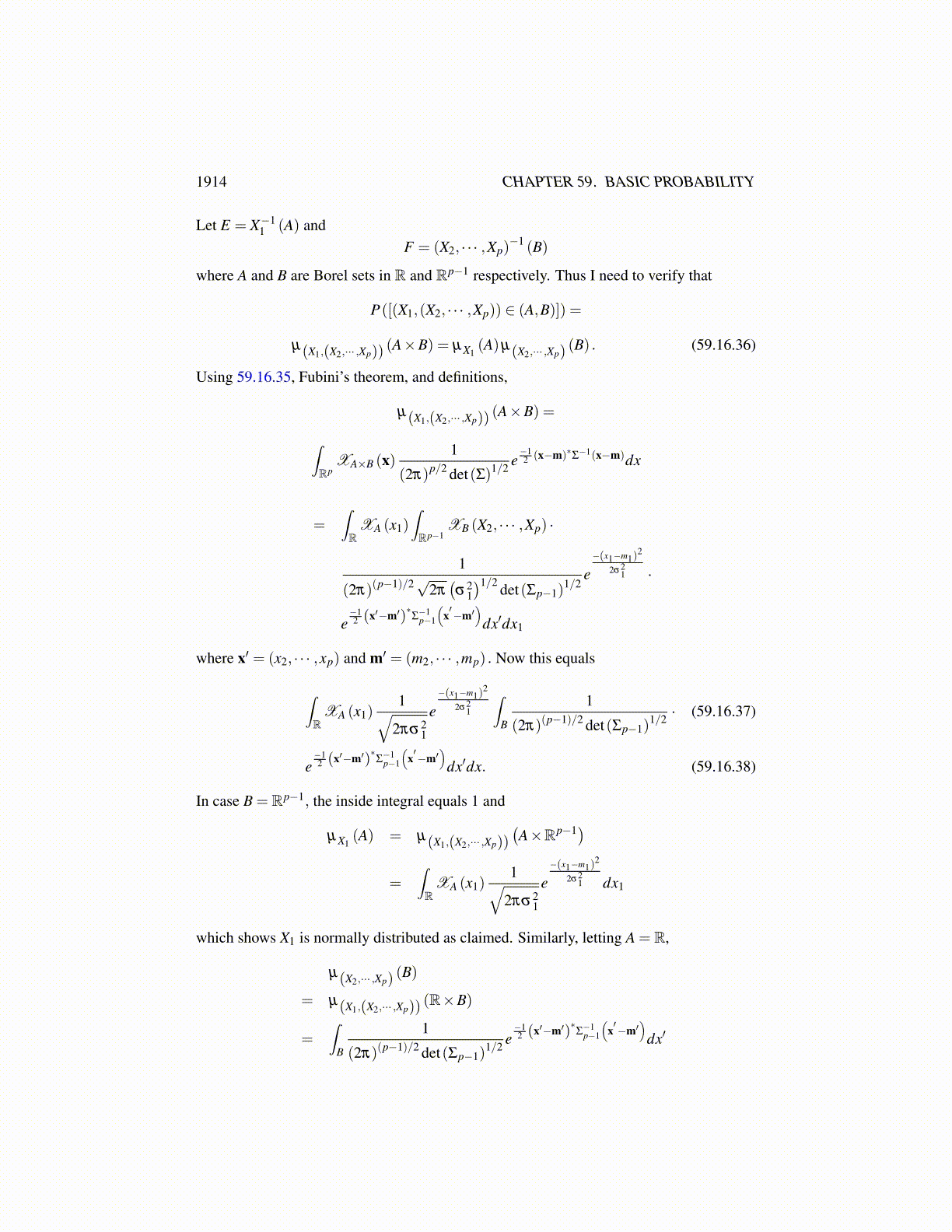
1914 CHAPTER 59. BASIC PROBABILITY
and the covariance matrix for X is
Σ jk = E((X j−m j)(Xk−mk)
∗) .Proof: Suppose first X is normally distributed. Then its characteristic function is of the
formφ X (t) = E
(eit·X)= eit·me−
12 t∗Σt.
Then letting a = (a1, · · · ,ap)
E(
eit ∑pj=1 aiXi
)= E
(eita·X)= eita·me−
12 a∗Σat2
which is the characteristic function of a normally distributed random variable with meana ·m and variance σ2 = a∗Σa. This proves half of the theorem. If X is normally distributed,then every linear combination is normally distributed.
Next suppose ∑pj=1 a jX j = a ·X is normally distributed with mean µ and variance σ2
so that its characteristic function is given in 59.16.34. I will now relate µ and σ2 to variousquantities involving the X j. Letting m j = E (X j) ,m = (m1, · · · ,mp)
∗
µ =p
∑j=1
a jE (X j) =p
∑j=1
a jm j, σ2 = E
( p
∑j=1
a jX j−p
∑j=1
a jm j
)2
= E
( p
∑j=1
a j (X j−m j)
)2= ∑
j,ka jakE ((X j−m j)(Xk−mk))
It follows the mean of the normally distributed random variable, a ·X is
µ = ∑j
a jm j = a ·m
and its variance isσ
2 = a∗E((X−m)(X−m)∗
)a
Therefore,E(eita·X)= eitµ e−
12 t2σ2
= eita·me−12 t2a∗E((X−m)(X−m)∗)a.
Then letting s = ta this shows
E(eis·X) = eis·me−
12 s∗E((X−m)(X−m)∗)s
= eis·me−12 s∗Σs
which is the characteristic function of a normally distributed random variable with m givenabove and Σ given by
Σ jk = E ((X j−m j)(Xk−mk)) .
By assumption, a is completely arbitrary and so it follows that s is also. Hence, X isnormally distributed as claimed.